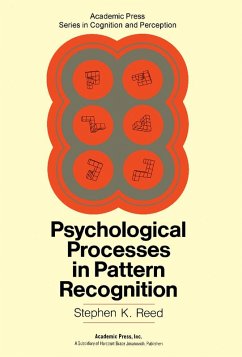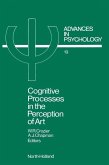The first three parts cover the representation, temporal effects, and memory codes of pattern recognition. These parts include the features, templates, schemata, and structural descriptions of information processing models. The principles of parallel matching, iconic storage, and the components and networks of memory codes are also considered. The remaining two parts look into the perceptual classification and response selection of pattern recognition. These parts specifically tackle the development of probability, distance, and recognition models.
This book is intended primarily for psychologists, graduate students, and researchers who are interested in the problems of pattern recognition and human information processing.
Dieser Download kann aus rechtlichen Gründen nur mit Rechnungsadresse in A, B, BG, CY, CZ, D, DK, EW, E, FIN, F, GR, HR, H, IRL, I, LT, L, LR, M, NL, PL, P, R, S, SLO, SK ausgeliefert werden.
Hinweis: Dieser Artikel kann nur an eine deutsche Lieferadresse ausgeliefert werden.









